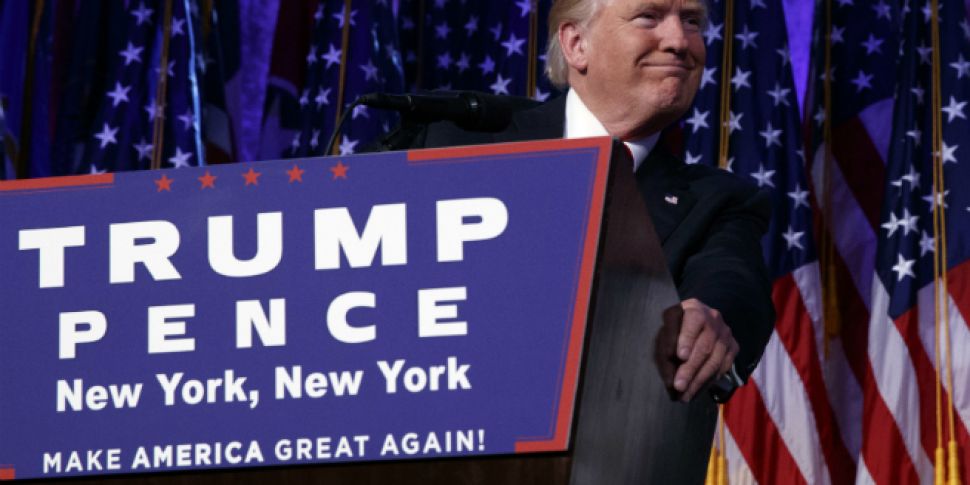November 8, 2016 may be remembered as the day conventional wisdom in politics perished once and for all.
Confounding virtually every so-called expert who closely followed the lengthy and hard fought campaign to succeed Barack Obama in the White House, Donald Trump defeated Hillary Clinton and will be the 45th President of the United States.
Hands up! I was one of those who believed that he had almost no chance of prevailing. When asked by Newstalk Drive's Sarah McInerney in late October (off air, thankfully) what the controversial billionaire’s chances of capturing the presidency were, I thought carefully and responded that they stood at about 3%. That was my honest estimation at the time.
The consensus view was that Trump could not possibly garner the necessary 270 Electoral College rested on certain assumptions. Specifically, there were certain states that, no matter what, he could not win.
Foremost among these were Pennsylvania, Michigan and Wisconsin. The first two had not voted for a Republican presidential candidate since 1988. The third hadn’t done so since endorsing Ronald Reagan in 1984. And demographic trends – above all, the collective change of the electorate – combined to render Trump victories there all but impossible.
In Pennsylvania and Michigan, Philadelphia and Detroit, two big cities with very large African-American communities, were seen as bulwarks against a Trump triumph. In Wisconsin, the left wing haven of Madison, together with solidly Democratic Milwaukee, were regarded as the heavily-populated environs that would deliver for Hillary.
Nonetheless, Trump won all three states. Why?

The fact is that Trump’s straightforward (albeit unrealistic, in some respects) appeal to “Middle America” went down well with that vast, almost indefinable swathe of the electorate. He promised he would put the interests of his country and its people first by revisiting existing trade deals, which have precipitated the loss of manufacturing jobs, and refusing to sign new agreements; that he would decline to send men and women to fight foreign wars, unless there was a manifest danger to the United States; and that, unlike other politicians, he would stand up to the financial elites at home and abroad.
Moreover, it is now clear that this message resonated far beyond the “angry white males” who most observers widely claimed it was aimed at. Simultaneously, these observers assumed that it would not persuade undecided voters to cast ballots for Trump, and could repel some constituencies. They were clearly wrong.
Polls indicate that Trump won 42% of women voters and 45% of all college graduates, as well as racking up big margins with white voters with a high school education. He even received almost 30% support from Latinos, notwithstanding some of his nasty campaign rhetoric and repeated promise to “build a wall” on the Mexican border.
There is a tremendous amount of negativity and pessimism in the United States currently. Huge numbers of Americans define themselves as isolationist (80% in a 2015 poll) and believe that the country is on the wrong track (73% in a 2013 poll). Donald Trump clearly connected with them in his campaign.
These hurting men and women have invested their hope in him. As president, he faces the herculean task of turning the ship around and reviving the American Dream. Most doubt that he can. Only time will tell.
At the same time, while the future of the Republican Party was questioned incessantly during the campaign, last Tuesday was a good day for the GOP. They maintained control of the United States Senate and the House of Representatives, and now they have the presidency, even if Donald Trump doesn’t toe the party line on some key issues.

On the other hand, the Democrats, who seemed to have a lock on the presidency because of their advantages in the most populous, diverse states - and in light of the reality that people of colour constitute a significant and ever-expanding segment of the electorate - had a terrible November 8th.
The party needs to reach out to the millions of disaffected men and women in “Middle America” and beyond who voted for Trump. Many of them work with their hands for a living, and live pay cheque to pay cheque. A lot of them used to be Democrats. The party needs to bring some of them back into the tent.
That will probably require a collective rethink of its partial conversion to the economic policies that are favoured by Wall Street and global financiers, and its wholesale embrace of the hard left cultural politics that are gospel in San Francisco and Manhattan, but anathema in much of “Middle America.”
It may come down to who will talk louder – the moneyed interests they have come to depend upon, or the ordinary Americans with whom they have lost touch?









